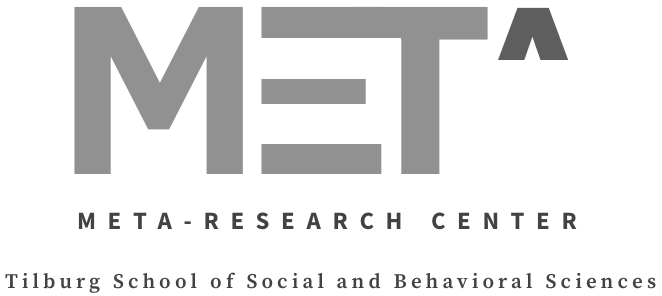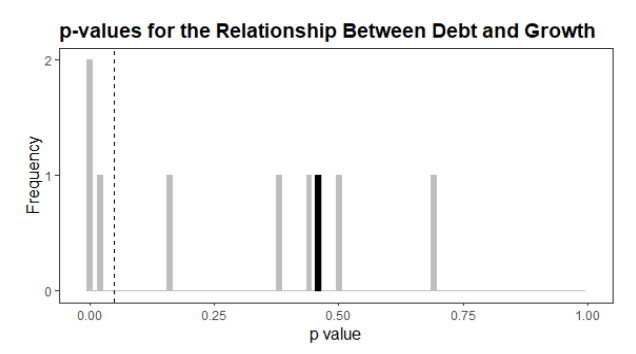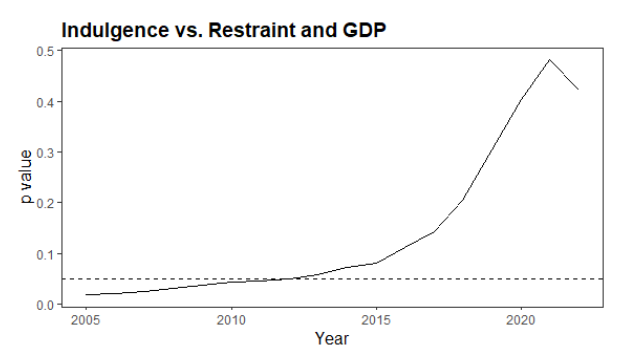Should meta-scientists hold themselves to higher standards?
This blogpost was written by Michèle Nuijten. Michèle is an assistant professor of our research group who currently studies reproducibility and replicability in psychology. She is also the developer of the tool “statcheck”. This tool automatically checks whether reported statistical results are internally consistent.
As a meta-scientist, I research research itself. I systematically examine the scientific literature to identify problems and apply the scientific method to design and test solutions. Inherent to meta-science is that it can also include critique of other people’s research and advice on how to improve.
But what if meta-scientists don’t always follow the very best practices they promote?
This question came up recently at an event where a high-profile meta-scientific paper was retracted due to misrepresentations of what had and hadn’t been preregistered. The backlash on social media included concerns that the authors had lost (at least some) credibility as advocates of responsible and transparent research.
That reaction stuck with me because it seemed to suggest that, for a meta-scientist to be credible and for their advice to be taken seriously, their own work must be flawless.
So I began to wonder: Should meta-scientists hold themselves to higher standards to maintain credibility? Should I? And how would it affect my own credibility as a meta-researcher if I dropped the ball somewhere along the way?
Dropping the ball
And I definitely did drop the ball. More than once.
For example, I discovered that my dissertation contained statistical reporting errors. The same dissertation in which I studied statistical reporting errors. And for which I developed statcheck, a tool I specifically designed to detect and prevent them.
In that same dissertation, I also examined bias in effect size estimates and advocated for preregistration: publishing a research plan before data collection to reduce analytical flexibility. But, as one of my opponents subtly pointed out during my defense, I hadn’t preregistered that study myself.
Criticizing the field for its high prevalence of statistical errors while making those same errors, or failing to preregister a study that promotes preregistration; what does that say about the validity of my recommendations? And what does it mean for my credibility as a meta-scientist?
Practice what you preach
Technically, you could make strong claims about the benefits of, say, data sharing without ever having shared a single data point yourself, but it’s not a great look.
To some extent, if you want your advice to be taken seriously, you need to practice what you preach. If you keep insisting that everyone should share their raw data, your credibility takes a hit if you never do it yourself. If you argue that all studies should have high statistical power, you’re probably less convincing if your own sample sizes are consistently tiny. And if you’re a vocal advocate for preregistration, it helps to have preregistered at least one of your own studies—if only to truly understand what you’re talking about.
Following your own advice doesn’t just strengthen your credibility; it also gives you firsthand experience with the challenges that can arise in practice. What looks great on paper isn’t always easy to implement. More importantly, by leading by example, you can show others what these practices look like in action and inspire them to follow suit. In this spirit, striving for the highest standards—whether through a flawless preregistration or a meticulously documented open dataset—makes perfect sense.
What is “perfect science”?
While I believe it’s important for meta-scientists to make a genuine effort to implement the changes they advocate, I don’t think it’s necessary—or even possible—to maintain a perfect track record.
One challenge is that best practices evolve over time. Early preregistrations, for example, seem rudimentary compared to today’s standards. What once qualified as “data sharing” may no longer meet current expectations. These shifts reflect a growing understanding of these practices: how they work in practice, their intended and unintended effects, when they are effective, and in some cases, whether they should be abandoned altogether. And both standards and practices are still evolving
Another issue is that not all best practices are feasible for every project. Some conflict with each other (e.g., data sharing vs. privacy concerns), while others may be ethically or practically impossible in certain contexts (e.g., large sample sizes in rare populations). I’ve advocated for a wide range of best practices: open data and materials, preregistration, Bayesian statistics, using statcheck to detect errors, high statistical power, multi-lab collaborations, verification of claims through reanalysis and replication, and more. While I’ve applied all of these practices in at least some of my work, I haven’t (and often couldn’t) apply them all at once. And that’s just the best practices I’ve personally written about; the broader literature contains many more good recommendations.
Credibility of claims, not people
So what does it mean for the credibility of meta-scientists if their own projects can’t even adhere to all best practices? In my view, that’s not the right question to ask. In science, what matters most is not the credibility of a person, but the credibility of a claim. If a claim—whether in applied science or meta-science—is built on shaky evidence, it should carry less weight. The key is to evaluate which best practices are essential for assessing the trustworthiness of a claim and which are less relevant.
For example, the statistical reporting error in my dissertation appeared in a secondary test, buried in a footnote, and had no impact on the main findings. Missing it was an unfortunate oversight, but it didn’t weaken my core claim that a large share of published papers contain reporting errors. On the other hand, one could argue that the claims from my unregistered study should be interpreted with more caution than if it had been preregistered.
Shared standards for good science
At its core, meta-science is simply science, just like applied research. The fundamental principles are the same; the main difference is that our "participants" are often research articles, and our recommendations aim not at populations of patients, adolescents, or consumers, but at the scientific process itself.
With that in mind, both meta-researchers and applied researchers should strive to follow best practices as they currently stand and as they are feasible for their projects. But perfection isn’t the goal. What matters most is transparency: acknowledging when best practices weren’t followed, explaining why, and adjusting how claims are interpreted accordingly. After all, the credibility of a claim should rest on the strength of its evidence, not on whether the person making it has a spotless record.
Science is always evolving, and so are its standards. What matters is not stubbornly trying to check all the boxes of an ever-changing checklist, but a commitment to honesty, critical reflection, and continuous improvement. The best way to build trust in meta-science—or any science—is not to appear flawless, but to openly engage with the challenges, trade-offs, and limitations of our own work. Good science isn’t about being perfect, it’s about being transparent, adaptable, and striving to do better.







